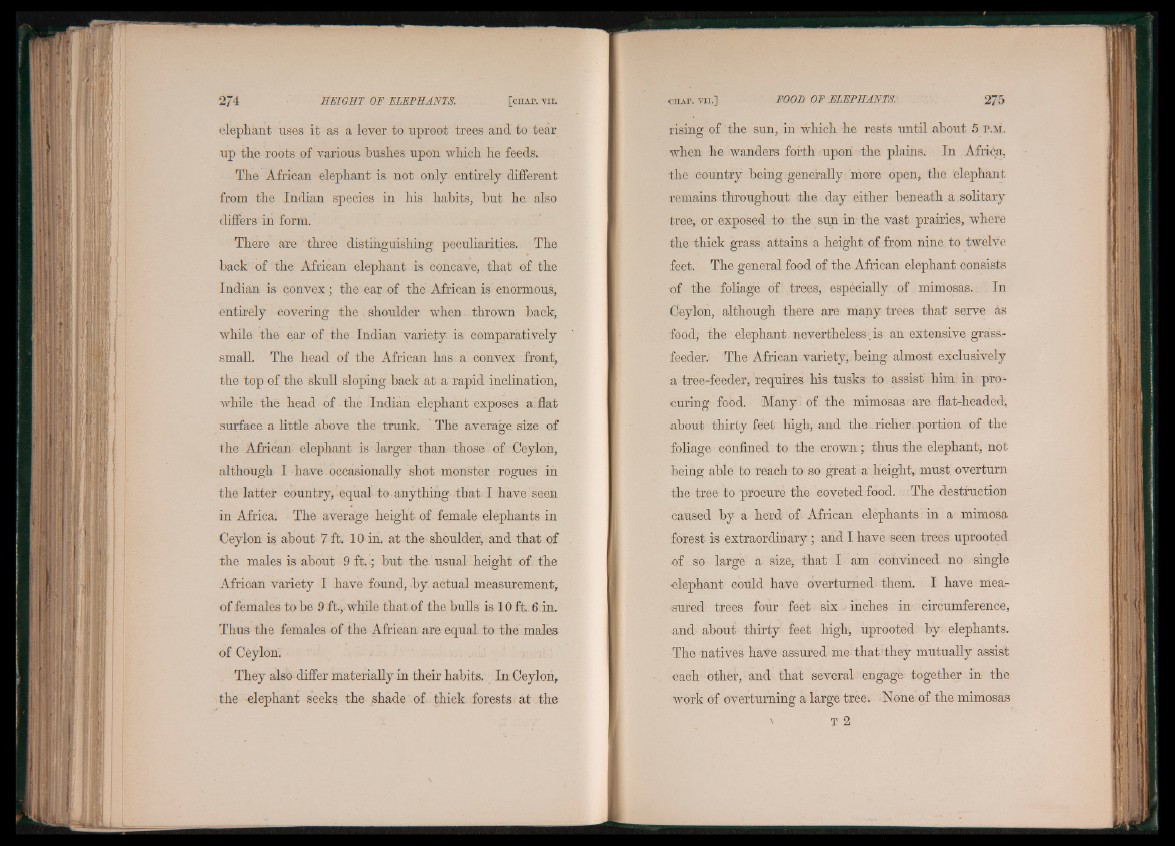
elephant uses it as a lever to uproot trees and to tear
up the roots of various bushes upon which he feeds.
The African elephant is not only entirely different
from the Indian species in his habits, but he. also
differs in form.
There are three distinguishing peculiarities. The
back of the African elephant is concave, that of the
Indian is convex; the ear of the African is enormous,
entirely covering th e , shoulder when thrown back,
while the ear of the Indian variety is. comparatively
small The head of the African has a convex front,
the top of the skull sloping back at a rapid inclination,
while the head of the Indian elephant exposes a flat
surface a little above the trunk. The average size of
the African elephant is larger than those of Ceylon,
although I have. occasionally shot monster rogues in
the latter country, equal to anything that I have seen
in Africa. The average height of female elephants in
Ceylon is about 7 ft. 10 in. at the shoulder, and that of
the males is about 9 f t.; but the. usual height of. the
African variety I have found, by actual measurement,
of females to be 9 ft,-while that of the bulls is 10 ft. 6 in.
Thus the females of the African are equal to the males
of Ceylon.
They also differ materially in their habits. In Ceylon,
the elephant seeks the shade of thick forests S at the
rising of the sun, in which he rests until about 5 p .m.
when he wanders forth upon the plains. In Africa,
the country being generally more open, the elephant
remains throughout the day either beneath a.solitary
tree, or exposed to the sun in the vast prairies, where
the thick grass, attains a height of from nine to twelve
feet. The general food of the African elephant consists
of the foliage of trees, especially of mimosas.. In
Ceylon, although there are many trees that serve as
food, the elephant nevertheless, is an extensive grass-
feeder. The African variety,, being almost exclusively
a tree-feeder, requires his tusks to assist him in procuring
food. Many of the mimosas are flat-headed,
about thirty feet high, and th e . richer portion. of the
foliage confined to the crown; thus the elephant, not
being able to reach to so great a height,, must overturn
the tree to procure the coveted food. The destruction
caused by a herd of African elephants in a mimosa
forest is extraordinary; and I have seen trees uprooted
of so large a size, that I am . convinced no single
elephant could have overturned, them. I have measured
trees four feet six inches in circumference,
and about- thirty feet high, uprooted by elephants.
The natives have assured me-that-'they mutually assist
each other, and that several engage together in the
work of overturning a large tree. None of the mimosas
' T 2